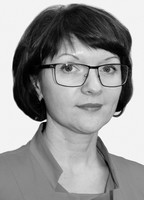Physical education and sports department students residing in Khanty-Mansi Autonomous District (Yugra); regulatory mechanisms and vascular system condition analysis
Фотографии:
ˑ:
Teoriya i praktika fizicheskoy kultury №8 2017, pp.25-27
Dr.Biol., Associate Professor A.A. Govorukhina1
Dr.Med., Associate Professor O.A. Malkov1
Dr.Biol., Associate Professor О.L. Nifontova1
A.A. Novoselova1
PhD E.E. Ibragimova2
1Surgut State Pedagogical University, Surgut
2Crimean Engineering and Pedagogical University, Simferopol
The study was designed to analyse the vascular system condition, vegetative NS regulation and mental conditions of the Physical Education and Sports Department students residing in the Russian Northern Khanty-Mansi Autonomous Region (Yugra). The study data demonstrated a high contribution of the parasympathetic division of the NS to the heart rhythm control, with contributions of different components to the heart rhythm vegetative regulation spectrum being rated. We found domination of the HF-component characteristic of the spectrum scale in the high-frequency range and vagal control of the heart rhythm; calculated the centralisation, subcortical centres activation and tension indices; found statistically meaningful gender-specific differences in the tension indices; determined the blood vessels stiffness and age rates; identified the students whose blood vessels age is notably older than the formal age; demonstrated that the female subjects’ blood vessels stiffness was higher than that of the male subjects; found gender differences in the personal anxiety, depression, stress and the key control mechanisms performance rates; and found stresses in 21% of the female and 8% of the male subjects, with 4.4% of the males diagnosed with significant stresses. The study data may be applied for screening purposes in off-clinical diagnoses of atherosclerosis and high cardiovascular risk groups.
Keywords: vessels, vegetative regulation, stress, adaptation.
References
- Vasyuk Y.A. Soglasovannoe mnenie rossiyskih ekspertov po otsenke arterialnoy zhestkosti v klinicheskoy praktike [Coordinated opinion of Russian experts on assessment of arterial stiffness in clinical practice]. Kardiovaskulyarnaya terapiya i profilaktika, 2016, no. 2, pp. 4-19.
- Gapon L.I., Shurkevich N.P., Vetoshkin A.S. Arterialnaya gipertenziya v usloviyah Tyumenskogo Severa. Desinhronoz i giperreaktivnost kak faktoryi formirovaniya bolezni [Arterial hypertension in conditions of Tyumen North. Desynchronosis and hyperreactivity as factors of disease formation]. Moscow: Meditsinskaya kniga, 2009, 208 pp.
- Mishina E.A. Sistemny analiz sezonnoy i sutochnoy ritmiki parametrov funktsionalnyih sistem organizma, prozhivayuschih na Severe RF. Avtoref. dis. kand. biol. nauk [System analysis of seasonal and diurnal rhythms of parameters of body's functional systems of Northern residents of the Russian Federation. PhD diss. abstract]. Tula, 2007, 24 pp.
- Morozov V.N., Khadartsev A.A. K sovremennoy traktovke mehanizmov stressa [Modern interpretation of stress mechanisms]. Vestnik novykh meditsinskikh tekhnologiy, 2013, vol. ХVII, no. 1, P. 15.
- Denham J. et.all. Aortic augmentation index in endurance athletes: a role for cardiorespiratory fitness. Eur J Appl Physiol., 2016, vol. 116, no. 8, pp. 1537-1544.
- Prodel E. et.all. Relationship between aortic augmentation index and blood pressure during metaboreflex activation in healthy young men. Blood Press Monit., 2016, vol. 21, no. 5, pp. 288-294.
- Townsend R.R. Arterial Stiffness: Recommendations and Standardization. Pulse (Basel)., 2017, vol. 4, no. 1, pp. 3-7.
- Trudeau L. Central blood pressure as an index of antihypertensive control: determinants and potential value. Can J Cardiol., 2014, vol. 30, no. 5, pp. 23-28.




 Журнал "THEORY AND PRACTICE
Журнал "THEORY AND PRACTICE